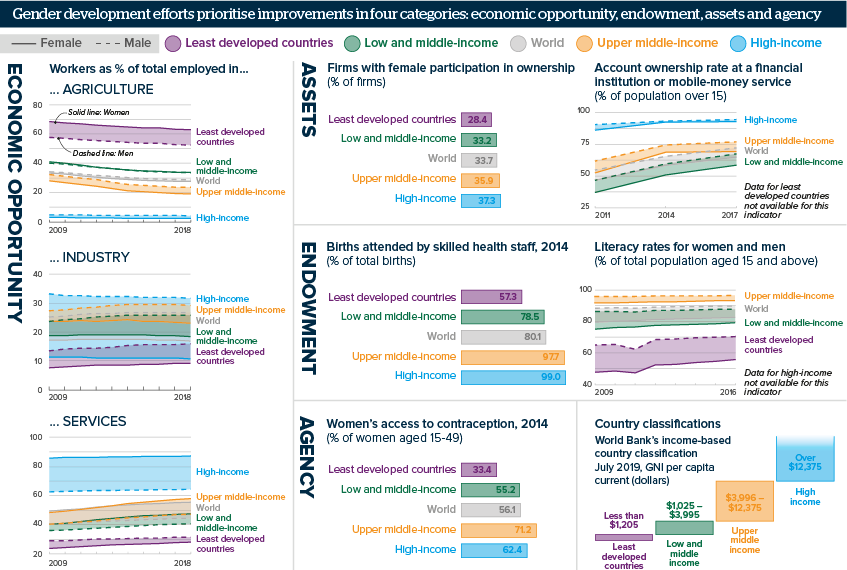Regional gender gaps face policy conflict
UN Sustainable Development Goals (SDGs) have made gender equality a top priority, but progress is slow and uneven
Source: World Bank
Outlook
Progress on promoting gender parity show wide regional discrepancies. High-income countries (mainly advanced economies in the West and Asia) have closed many gender gaps. Low-income and least developed countries (largely in sub-Saharan Africa and Asia) fared the worst. Middle and upper-middle income countries of Central Asia, Central and Eastern Europe, the Middle East and Latin America fall in between.
Regional gaps are unlikely to narrow substantially over the coming decade, not only due to entrenched socio-cultural resistance and varying political commitments, but also conflicting pressure on developing countries to boost human capital without expanding the budget deficit. Tepid global growth over 2019-20 will intensify this conflict, driving myopic investment decisions in regions that could reap the greatest gender equality dividend longer-term.
Impacts
- Top development banks will intensify their commitment to gender mainstreaming, promoting both policy and market reform.
- UN SDGs for 2030 face major investment shortages; private sector interest is limited but rising.
- A second term for US President Donald Trump would further reduce funding for areas such as maternal health.
- European funding pledges will be insufficient to cover gaps left by US aid decline.
See also
- Gender infrastructure gaps galvanise diverse partners - Sep 24, 2019
- Gender friendly business and law policies need impetus - Apr 25, 2019
- More graphic analysis
